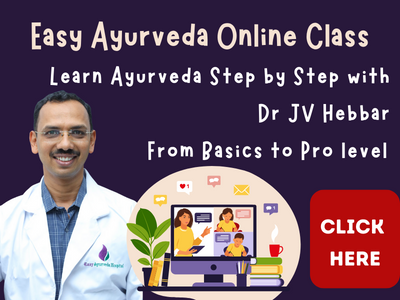Sushruta Samhita Sharirasthana Chapter 10 Garbhiņi Vyākaraṇa Shariram (Regimen of the Pregnant Woman)
The 10th chapter of Sharirasthana of Sushruta Samhita is named as Garbhiņi Vyäkaraņa Shariram Adhyaya. This chapter deals with the Regimen of the Pregnant Woman.
अथातोगर्भिणीव्याकरणंशारीरंव्याख्यास्यामः॥१॥
यथोवाचभगवान्धन्वन्तरिः॥२॥
We will now expound the chapter by name Garbhiņī Vyākaraṇaśārīra regimen of the pregnant woman; as revealed by the venerable Dhañvañtari.
Table of Contents
Garbhiņīcaryā- conduct of the pregnant woman
गर्भिणीप्रथमदिवसात्प्रभृतिनित्यंप्रहृष्टाशुच्यलङ्कृताशुक्लवसनाशान्तिमङ्गलदेवताब्राह्मणगुरुपराचभवेत्,मलिनविकृतहीनगात्राणिनस्पृशेत्,दुर्गन्धदुर्दर्शनानिपरिहरेत्उद्वेजनीयाश्चकथाः,शुष्कंपर्युषितंकुथितंक्लिन्नंचान्नंनोपभुञ्जीत,बहिर्निष्क्रमणंशून्यागारचैत्यश्मशानवृक्षाश्रयान्क्रोधमयशस्करांश्चभावानुच्चैर्भाष्यादिकंचपरिहरेद्यानिचगर्भंव्यापादयन्ति,नचाभीक्ष्णंतैलाभ्यङ्गोत्सादनादीनिसेवेत,नचायासयेच्छरीरं,पूर्वोक्तानिचपरिहरेत्,शयनासनंमृतास्तरणंनात्युच्चमपाश्रयोपेतमसंबाधंचविदध्यात्,हृद्यंद्रवमधुरप्रायंस्निग्धंदीपनीयसंस्कृतंचभोजनंभोजयेत्,सामान्यमेतदाप्रसवात्॥३॥
The pregnant woman should follow the below said right from the first day of the pregnancy –
– Be happy always
– Maintain cleanliness
– Get adorned with gems and jewels
– Wear white clothes
– Perform propitiatory rites and auspicious activities,
– Should remain faithful towards Gods, Brahmanas and preceptors,
– Should keep away from dirty, abnormal and despised things and should never touch them,
– Keep away from odours and seeing things which are unpleasant
She should also stop–
– listening to stories or news which could cause mental disturbance
– eating dry, stale, putrefied and very moist foods
– going out of the house
– staying in vacant houses
– visiting or staying near trees of worship
– going to or staying in crematorium,
– being angry
– all activities which would give ill repute,
– speaking loudly
– all activities which could cause death of foetus
Below mentioned are the other regimens the pregnant woman should follow –
– not getting indulged too much in taking oil baths or massage etc.
– take care that her body does not undergo too much exertion,
– use soft and broad beds and seats which are placed neither too high nor too low, neither dangerously placed nor are troublesome
– foods that she consumes should be good for heart and mind, liquid in consistency, having predominantly sweet taste, is unctuous and prepared with herbs which enhance hunger
All these regimens should be followed until the time of delivery.
Āhāravidhi- regimen of food
विशेषतस्तुगर्भिणीप्रथमद्वितीयतृतीयमासेषुमधुरशीतद्रवप्रायमाहारमुपसेवेत;विशेषतस्तुतृतीयेषष्टिकौदनंपयसाभोजयेत्,चतुर्थेदना,पञ्चमेपयसा,षष्ठेसर्पिषेत्येके;चतुर्थेपयोनवनीतसंसृष्टमाहारयेज्जाङ्गलमांससहितंहृद्यमन्नंचभोजयेत्,पञ्चमेक्षीरसर्पिःसंसृष्टं,षष्ठेश्वदंष्ट्रासिद्धस्यसर्पिषोमात्रांपाययेद्यवागूवा,सप्तमेसर्पिःपृथक्पादिसिद्धम्,एवमाप्यायतेगर्भः;अष्टमेबदरोदकेनबलातिबलाशतपुष्पापललपयोदधिमस्तुतैललवणमदनफलमधुघृतमिश्रेणास्थापयेत्पुराणपुरीषशुद्ध्यर्थमनुलोमनार्थंचवायोः,ततःपयोमधुरकषायसिद्धेनतैलेनानुवासयेत्,अनुलोमेहिवायौसुखंप्रसूयतेनिरुपद्रवाचभवति,अतऊर्ध्वंस्निग्धाभिर्यवागूभिर्जाङ्गलरसैश्चोपक्रमेदाप्रसवकालात्;एवमुपक्रान्तास्निग्धाबलवती सुखमनुपद्रवाप्रसूयते॥४॥
During the first, second and third months of pregnancy, the pregnant woman should mainly consume foods which are –
– predominantly sweet in taste,
– cold in potency and
– more of liquids (liquid in consistency)
According to the opinion of some scholars, below mentioned regimen should be followed from third to sixth months of pregnancy wherein boiled sastika rice should be consumed with different things –
Mainly during the third month of pregnancy, the pregnant woman should eat Sastika rice boiled and prepared properly, along with milk.
In the fourth month of pregnancy, she should consume properly boiled sastika rice along with curd.
In the fifth month of pregnancy, she should eat boiled sastika rice with milk.
In the sixth month of pregnancy, she should eat boiled sastika rice with ghee.
According to the opinion of the treatise (Sushruta), the pregnant woman should follow the below mentioned regimen –
During fourth month she should consume –
– foods added with milk and butter, along with
– meat of animals living in desert like regions and
– boiled rice which gives pleasure to her mind,
During sixth month, she should drink one of the below mentioned –
– ghee prepared with swadamstra or
– yavagu – thick form of gruel
During seventh month, she should drink –
– ghee prepared with prthakparnietc herbs by the consumption of which the foetus becomes satisfied
During the eighth month, the physician should administer Kashaya vasti i.e. decoction enemas with decoction of Badara – jujube fruit added with below mentioned ingredients –
Paste of –
– Bala – Sida cordifolia
– Atibala
– Satapushpa
– Palala – meat
Below mentioned ingredients should be added –
– Milk
– Dadhimastu – whey
– Oil
– Salt
– Madanaphala – Randia dumetorum
– Honey and
– Ghee
Benefits –
The enema prepared with the above-mentioned ingredients bestows the below mentioned benefits –
– Removes old faeces which is stagnant in the body (colon)
– Creates downward movement of Vata
Anuvasana Vasti –
After having administered Asthapana / Niruha Vasti, the pregnant woman should be administered with Anuvasana Vasti i.e. unctuous / lubricating enema. For this purpose, oil processed with milk and herbs of sweet taste should be used.
After administering both the above said enemas, the woman will deliver easily and that too without any complications.
After this, she should be administered with the below mentioned foods until delivery –
– Unctuous and thick gruels
– Soup of meat of animals living in arid regions
When taken care of in this manner, the pregnant woman will remain happy, strong and deliver the child easily and happily. No complications will ever occur during the entire process and also during delivery.
Sutikāgāra – maternity chamber
नवमेमासिसूतिकागारमेनांप्रवेशयेत्प्रशस्तेतिथ्यादौ।तत्रारिष्टंब्राह्मणक्षत्रियवैश्यशूद्राणांश्वेतरक्तपीतकृष्णेषुभूमिप्रदेशेषुबिल्वन्यग्रोधतिन्दुकभल्लातकनिर्मित सर्वागारंयथासङ्ख्यंतन्मयपर्यतसमुपलिप्तभित्तिंसुविभक्तपरिच्छदंप्राग्द्वारंदक्षिणद्वारंवाऽष्टहस्तायतंचतुर्हस्तविस्तृतंरक्षामङ्गलसंपन्नंविधेयम्॥५॥
In the ninth month,
The pregnant woman should enter Sutikagara i.e. maternity chamber. She should be made to enter the chamber on an auspicious day after considering the auspiciousness of naksatra, karana, yoga etc.
Sutikagara should have been constructed on the land having the below mentioned types of soil –
– White colored soil for Brahmanas
– Red colored soil for Ksatriyas
– Yellow colored soil for Vaisyas
– Black colored soil for Sudras
The Sutikagara should be built with the woods of the below mentioned trees –
– Bilva – Aegle marmelos
– Nyagrodha –
– Tinduka – or
– Bhallataka – Semecarpus anacardium
It should also be equipped with –
– Cots – as many as required which are prepared from the wood of Bilva etc trees mentioned above
– Well plastered walls
– Well made partitions
– Doors facing east or south which is eight arms in length and four arm in breadth i.e. 12×6 feet
– Things required for protective and auspicious rites
Prajāyinī – lady in labour / parturient woman
जातेहिशिथिलेकुक्षौमुक्तेहृदयबन्धने॥
सशूलेजघनेनारीज्ञेयासातुप्रजायिनी॥६॥
तत्रोपस्थितप्रसवायाःकटीपृष्ठंप्रतिसमन्ताद्वेदनाभवत्यभीक्ष्णंपुरीषप्रवृत्तिर्मूत्रंप्रसिच्यतेयोनिमुखाच्छ्लेष्माच॥७॥
Prajayini – The pregnant woman with the below mentioned features shall be considered as Prajayani i.e. one who is going to deliver the baby soom –
– Looseness of the abdomen
– Foetus released from the region of the heart
– Pain in the waist region
UpasthitaPrasava – Below mentioned are the symptoms of arrival of delivery time –
– Severe pain in the waist and back region occurring repeatedly,
– Elimination of faeces,
– Discharge of urine and also slesma (thin slimy fluid) from the yoni – vaginal orifice
Prasavopacāra- conduct of delivery
प्रजनयिष्यमाणांकृतमङ्गलस्वस्तिवाचनांकुमारपरिवृतांपुन्नामफलहस्तांस्वभ्यक्तामुष्णोदकपरिषिक्तामथैनांसम्भृतांयवागूमाकण्ठात्पाययेत्,ततःकृतोपधानेमृदुनिविस्तीर्णेशयनेस्थितामाभुग्नसक्थीमुत्तानामशङ्कनीयाश्चतस्रःस्त्रियःपरिणतवयसःप्रजननकुशलाःकर्तितनखाःपरिचरेयुरिति॥८॥
अथास्याविशिखान्तरमनुलोममनुसुखमभ्यज्यानुब्रूयाच्चैतामेका – सुभगेप्रवाहस्वेति,नचाप्राप्तावीप्रवाहस्व,ततोविमुक्तेगर्भनाडीप्रबन्धेसशूलेषुश्रोणिवङ्क्षणबस्तिशिरःसुचप्रवाहेथाःशनैःशनैः,ततोगर्भनिर्गमेप्रगाढं,ततोगर्भेयोनिमुखंप्रपन्नेगाढतरमाविशल्यभावात्;अकालप्रवाहणादधिरंमूकंकुब्जंव्यस्तहनुमूर्ध्वाभिघातिनंकासश्वासशोषोद्भुतंविकटंवाजनयति॥९॥
The pregnant woman who is in labour should be advised to perform the below mentioned –
– Auspicious rites
– Hear hymns of benediction
– Have plenty of children around her,
– Hold in her hand, the fruits bearing male name,
– Get her body anointed with oil and take bath in warm water,
– Drink Yavagu – thick gruel added with ghee until she is stomach full i.e. fully satisfied
Positioning the pregnant woman –
After this, the pregnant woman in labour should be –
– Made to lie on a bed which is soft and wide and has pillows
– She should keep her thighs folded at the knees and
– Lie with her face upward, towards the roof
– She should be held by four elderly women who are extremely faithful, married, very much skilled in conducting delivery and who have trimmed (pared) her nails. Such ladies should nurse the lady in labour.
Other measures
After this, the pubic hairs of the woman should be shaved. Her pelvis should be anointed with oil.
Massage of the pelvis should be done gently in downward direction making her feel comfortable.
Advice to strain – One of the midwives who is attending the woman should say these words of comfort and encourage the woman to strain so as to facilitate the labor, as – ‘you, good lady, you have to strain a little bit now. But do not strain without getting the avi (labour pain), until the umbilical cord gets loosened of its attachment and you experience pain in your waist and upper part of your urinary bladder. Continue to strain repeatedly but slowly. Once the foetus starts coming out and you sense that, you need to strain greatly. The straining should be even greater once you sense that the foetus has reached the vaginal orifice so as to force the foetus out, together with placenta. You should also remember that you should not strain before the proper time. If done, the child may be delivered deaf, dumb, hunchback, with distorted lower jaw, with injuries of organs above the shoulders and will also be afflicted with cough, dyspnoea and emaciation. The baby may also be emaciated, deformed or monstrous in shape”.
Janana sahāya, manipulation for easy delivery
तत्रप्रतिलोममनुलोमयेत्,प्राञ्जलमाकर्षेत्॥१०॥
If the foetus has been wrongly positioned, the following steps should be taken –
– If it is placed with its head up i.e. upward, it should be brought downward
– If it is bent downward, it shall be pulled out gently
गर्भसनेतु योनिंधूपयेत्कृष्णसर्पनिर्मोकेणपिण्डीतकेनवा,बध्नीयाद्धिरण्यपुष्पीमूलंहस्तपादयोः,धारयेत्सुवर्चलांविशल्यांवा॥११॥
In case of foetal obstruction, the below mentioned measures should be done –
– The woman’s vagina should be fumigated with fumes of black cobra peel or pinditaka (madanaphala)
– Hiranyapuspi / Kalihari root is tied around her hands and feet
– She should be made to wear Suvarchala or Visalya as amulets on her body
Prasavottara karma – post-delivery activities
अथजातस्योल्बंमुखंचसैन्धवसर्पिषाविशोध्य,घृताक्तंमूर्ध्निपिचुंदद्यात्;ततोनाभिनाडीमष्टाङ्गुलमायम्यसूत्रेणबद्ध्वाछेदयेत्,तत्सूत्रैकदेशंचकुमारस्यग्रीवायांसम्यग्बध्नीयात्॥१२॥
Below mentioned measures should be conducted after the childbirth –
– Saindhava lavana i.e. rock salt and ghee mixed together should be used to clear the ulba – vernix caseosa and mouth of the child
– Ghee smeared cotton swab should be kept on the top of the head of the child
– Now, the nabhinadi i.e. umbilical cord should be cut. It should be pulled to a length of 8 angula i.e. 16 cm. It should be tied with a thread and cut at one end. It should be tied around the child’s neck loosely. This would prevent pain, hindrance and exudation.
अथकुमारंशीताभिरद्भिराश्वस्यजातकर्मणिकृतेमधुसर्पिरनन्तचूर्णमङ्गुल्याऽनामिकयालेहयेत्।ततोबलातैलेनाभ्यज्य,क्षीरवृक्षकषायेणसर्वगन्धोदकेनवारूप्यहेमप्रतप्तेनवावारिणास्नापयेदेनंकपित्थपत्रकषायेणवाकोष्णनयथाकालंयथादोषंयथाविभवंच॥१३॥
Below mentioned are the measures to be taken with respect to the new born child –
– Cold water bath should be given to the child and comforted in a good way,
– Honey, ghee and powder of Ananta should be mixed into a homogenous mixture. The baby is made to lick this mixture applied to the ring finger.
– Bala taila should be used to anoint the child and a comfortable bath. Bath should be given with warm Panchavalkala Kashaya – decoction prepared with bark of trees having milky sap. Alternatively, a bath should be given using water boiled with Sarvagandha herbs i.e. fragrant herbs like Ela – cardamom etc. Decoction of Kapittha leaves too can be used for the same purpose. Whichever herbs are available appropriate to the season, dosha and strength (of the herbs) should be used skilfully.
Sisu āhara – feeding the newborn
धमनीनांहृदिस्थानांविवृतत्वादनन्तरम्॥
चतूरात्रात्रिरात्राद्वास्त्रीणांस्तन्यंप्रवर्तते॥१४॥
तस्मात्प्रथमेऽह्निमधुसर्पिरनन्तमिश्रंमन्त्रपूतंत्रिकालंपाययेत्,द्वितीयेलक्ष्मणासिद्धंसर्पिः,तृतीयेच;ततःप्राङ्निवारितस्तन्यंमधुसर्पिःस्वपाणितलसंमितंद्विकालंपाययेत्॥१५॥
The dhamanis – arteries present in the region of the heart (chest, breasts) open up three or four days following the child birth. Then, the breast milk gets produced.
On the first day – Therefore, a mixture of honey, ghee and Ananta – fold which has been sanctified with sacred hymns, should be given for the child to lick on the first day of its birth. It shall be administered thrice.
On the second and third day – the child should be given ghee boiled with Laksmana.
After this, the breastmilk which has been extracted earlier shall be given after having mixed it with honey and ghee. It shall be administered twice in a day. The quantity of this should be equal to that which can fit into the palm of the child – swapani tala pramana.
Sūtikopacāra- management of peurperum
अथसूतिकांबलातैलाभ्यक्तांवातहरौषधनिष्क्वाथेनोपचरेत्।सशेषदोषांतुतदहःपिप्पलीपिप्पलीमूलहस्तिपिप्पलीचित्रकशृङ्गवेरचूर्णंगुडोदकेनोष्णेनपाययेत्,एवंद्विरात्रंत्रिरात्रंवा कुर्यादादुष्टशोणितात्।विशुद्धततोविदारिगन्धादिसिद्धांस्नेहयवागूक्षीरयवागूवापाययेत्रिरात्रम्।ततोयवकोलकुलत्थसिद्धेनजाङ्गलरसेनशाल्योदनंभोजयेद्वलपग्रिबलंचावेक्ष्य।अनेनविधिनाऽध्यर्धमासमुपसंस्कृताविमुक्ताहाराचाराविगतसूतिकाभिधानास्यात्, पुनरार्तवदर्शनादित्येके॥१६॥
Below mentioned measures should be undertaken in relation to the woman who has delivered the child –
– Body should be anointed with Bala Taila
– Decoction prepared with vata mitigating herbs should be given to drink
– Powder of Pippali, pippalimula, hastipippali, chitraka and srngavera mixed with solution of jaggery and made warm should be given to lick to expel the residue morbid doshas especially vitiated blood, for two to three days or until the doshas remain inside (until it is expelled).
– Yavagu prepared from the Vidarigandhadi Gana group of herbs should be given to drink added with ghee or milk, after the morbid doshas are expelled. This should be given for three days.
– Boiled rice should be given for consumption after this. It should be given along with soup of Yava, kola and kulattha and soup prepared with meat of animals and birds living in desert-like regions. It should be given after having considered her strength and digestive power.
– In this way, the woman adhering to the above-mentioned regimen of foods and avoiding the contraindicated activities gets the name of Sutika i.e. woman in puerperium, for a period of one and half months. She will bear the same name until her next menstrual flow appears.
धन्वभूमिजातांतुसूतिकांघृततैलयोरन्यतरस्यमात्रांपाययेत्पिप्पल्यादिकषायानुपानां,स्नेहनित्याचस्यात्रिरात्रंपञ्चरात्रंवाबलवती;अबलांयवागूंपाययेत्रिरात्रंपञ्चरात्रंवा।अतऊर्ध्वंस्निग्धेनान्नसंसर्गेणोपचरेत्॥१७॥
Sūtikābelonging to the dhanvanabhumi i.e. arid region should be given ghee or oil in suitable dose for drinking.
After this, she should be given Pippalyadi Gana Kashaya as an after-drinks. This shall be given for a period of three to five days if the woman is strong enough. On the other hand, yavagu – thick gruel should be given for drinking for three or five days, if the woman is weak. Following this, the woman in puerperium should be given unctuous foods for her nourishment.
प्रायशश्चैनांप्रभूतेनोष्णोदकेनपरिषिञ्चेत्,क्रोधायासमैथुनादींश्चपरिहरेत्॥१८॥
Streams of warm water should be sprinkled on her many times a day. She should be advised to avoid anger, over-exertion and copulation etc.
मिथ्याचारात्सूतिकायायोव्याधिरुपजायते॥सकृच्छ्रसाध्योऽसाध्योवाभवेदत्यपतर्पणात्॥१९॥तस्मात्तांदेशकालौचव्याधिसात्म्येनकर्मणा॥परीक्ष्योपचरेन्नित्यमेवंनात्ययमाप्नुयात्॥२०॥
The diseases caused due to improper management / treatment of sutika would either become curable with difficulty or incurable and this happens due to severe under-nourishment.
Therefore, Sutika should be treated with foods, medicines and actions which are congenial to her disease without allowing any scope for complications or hazards. Treatment should be done after considering the desha – nature of the region and kala – season.
Aparāpātana – removing the retained placenta
अथापराऽपतन्त्यानाहाध्मानौकुरुते,तस्मात्कण्ठमस्याःकेशवेष्टितयाऽङ्गुल्याप्रमृजेत्,कटुकालाबुकृतवेधनसर्षपसर्पनिर्मोकैर्वाकटुतैलविमिर्योनिमुखंधूपयेत्,लाङ्गलीमूलकल्केनवाऽस्याःपाणिपादतलमालिम्पेत्,मूर्ध्निवाऽस्यामहावृक्षक्षीरमनुसेचयेत्,कुष्ठलाङ्गलीमूलकल्कंवामद्यमूत्रयोरन्यतरेणपाययेत्,शालमूलकल्कंवापिप्पल्यादिंवामद्येन,सिद्धार्थककुष्ठलाङ्गलीमहावृक्षक्षीरमिश्रेणसुरामण्डेनवाऽऽस्थापयेत्,एतैरेवसिद्धेनसिद्धार्थकतैलेनोत्तरबस्तिदद्यात्,स्निग्धेनवाकृत्तनखेनहस्तेनापहरेत्॥२१॥
The woman would experience distension of abdomen and flatulence if Aparā (placenta) does not come out at the right time after delivery of the child.
Hence the below mentioned treatments shall be done –
– her throat should be tickled with finger tied with hairs,
– her vaginal orifice should be exposed to the fumes of kațukālābu,krtavedhana,sarsapa or sarpanirmoka(snake peel) added with katutaila
– her palms and soles should be smeared with the paste of the roots of lāñgalī,
– her head should be smeared with the milky sap of mahāvíkşa; or
– paste of root of kustha and lāñgali mixed with wine, urine (of cow) or any other should be given her to drink; or
– paste of root of sāla or of drugs of pippalyādigana mixed with wine given to drink; or
– decoction enema containing siddhārthaka,kustha,lāñgalī and sap of mahāvrkșa added with scum of the beer; or
– uttarabasti(vaginal douche) prepared with the same drugs and oil of siddhārthaka should be administered; or
– it (placenta) should be pulled out by the hand being lubricated and nails cut close
Makkalla – puerperal pain / sepsis
प्रजातायाश्चनार्यारूक्षशरीरायास्तीक्ष्णैरविशोधितंरक्तंवायुनातद्देशगतेनातिसंरुद्धंनाभेरधःपार्श्वयोर्बस्तौबस्तिशिरसिवाग्रन्थिंकरोति;ततश्चनाभिबस्त्युदरशूलानिभवन्ति,सूचीभिरिवनिस्तुद्यतेभिद्यतेदीर्यतइवचपक्वाशयः,समन्तादाध्मानमुदरेमूत्रसङ्गश्चभवतीतिमक्कल्ललक्षणम्।तत्रवीरतर्वादिसिद्धंजलमूषकादिप्रतीवापंपाययेत्,यवक्षारचूर्णंवासुखोदकेनपिप्पल्यादिक्वाथेनवा,पिप्पल्यादिचूर्णंवासुरामण्डेन,वरुणादिक्वाथंवापञ्चकोलैलाप्रतीवापं,पृथकपादिक्वाथंवाभद्रदारुमरिचसंसृष्टं,पुराणगुडंवात्रिकटुकचतुर्जातककुस्तुम्बुरुमिश्रंखादेत्,अच्छंवापिबेदरिष्टमिति॥२२॥
Causes – excessive dryness in the body of the woman who has delivered the child and inclomplete evacuation / clearance of blood.
Pathogenesis –
The blood which has not come out completely gets greatly vitiated by vata present in that region and
↓
Forms a tumor
↓
Either below the navel region or on its both sides, in the urinary bladder (region) or at the upper portion (head) of the urinary bladder
↓
This causes pain in the umbilical region and also in the bladder and abdomen. The pain is like that produced by pricking of needles
↓
The person feels like his colon has been cut into two parts. The condition is associated with flatulence and obstruction of urine.
↓
This condition is called Makkalla.
Treatment for Makkalla –
– water prepared with Vidarigandha Gana group of herbs for drinking, added with powder of herbs of Usakadi Gana group of herbs or
– powder of Yavaksara with lukewarm water or decoction of Pippalyadi Gana group of herbs or
– powder of Pippalyadi Gana group of herbs with Suramanda – scum of beer or
– decoction of Varunadi Gana group of herbs with PanchakolaChurna or
– decoction of Prthakparnietc herbs added with powder of Bhadradaru and Marica or
– old jaggery mixed with TrikatuCurna, Caturjata and Kustumbara or
– arista – for drinking
Bālopacāra, care of the newborn infant
अथबालंक्षौमपरिवृतंक्षौमवस्त्रास्तृतायांशय्यायांशाययेत्,पीलुबदरीनिम्बपरूषकशाखाभिश्चैनंपरिवीजयेत्,मूनिचास्याहरहस्तैलपिचुमवचारयेत्,धूपयेच्चैनंरक्षोनधूपैः,रक्षोनानिचास्यपाणिपादशिरोग्रीवास्ववसृजेत्,तिलातसीसर्षपकणांश्चात्रप्रकिरेत्,अधिष्ठानेचाग्निंप्रज्वालयेत्,व्रणितोपासनीयंचावेक्षेत॥२३॥
The newborn child should be taken care of in the below mentioned way –
– child should be wrapped in a soft linen
– the wrapped child should be placed on the bed covered with soft linen sheets
– twigs of pilu, badari, nimba or parusaka should be used as fans
– oil-soaked cotton pad shall be kept on the head / crown of the head of the child often
– expose the child to fumes of Raksoghna herbs
– Raksoghna herbs should be tied to the hands, feet, head and neck
– sprinkle the powder of tila, Atasi and sarsapa all around the child
– keep the fire lit in the chamber where the child is placed
– adopt all other procedures described in the context of Vranitopasana chapter (Sutra Sthana Chapter 19)
Nāmakarana- naming ceremony
ततोदशमेऽहनिमातापितरौकृतमङ्गलकौतुकौस्वस्तिवाचनंकृत्वानामकुर्यातयदभिप्रेतंनक्षत्रनामवा॥२४॥
Next,the parents of the child should perform auspicious rites, recite sacred hymns and name their child on the tenth day after the birth of the child. The name should be as desired and selected by them or by the name of the star constellation in which the child was born.
Dhātri yojana- engaging a wet-nurse
ततोयथावर्णधात्रीमुपेयान्मध्यमप्रमाणांमध्यमवयस्कामरोगांशीलवतीमचपला.मलोलुपशमकशामस्थूलाप्रसन्नक्षीरामलम्बौष्ठीमलम्बोर्ध्वस्तनीमव्यङ्गामव्यसनिनीजीवद्वत्सांदोग्धीवत्सलामक्षुद्रकर्मिणीकुलेजातामतोभूयिष्लैश्चगुणैरन्वितांश्मामामारोग्यबलवद्धयेबालस्यतत्रो + स्तनीकरालंकुर्यात्,लम्बस्तनीनासिकामुखंछादयित्वामरणमापादयेत्।
Next,selection of Dhatri i.e. wet-nurse who would feed the child shall be described. Dhatri should possess the below mentioned features to consider her for feeding and nursing the child –
– she should belong to the same caste of the child
– she should be of moderate built and of middle age
– she should be free from any disease
– her character should be virtuous
– she should have a steady mind and not greedy
– she should neither be emaciated nor obese
– she should be producing pure milk and her lips should not be drooping,
– her breasts should neither be sagging nor everted
– she should not have deformities,
– she should not be in a period of grief or always grieving
– she should have a living child whom she is feeding,
– she should be affectionate and not indulged in mean activities,
– she should have been born in a respected family
– she should be endowed with more benevolent qualities
– she should be of brown colour
The woman / wetnurse bearing the above said qualities alone should be appointed for ensuring health and increase of strength of the child.
If the wet nurse has elevated breasts, she would make the child look ugly. On the other hand, if she has sagging breasts, it will cause death of the child since the sagging breasts would obstruct the orifices of the nose and mouth of the child while feeding.
Stanyapāna- suckling the child
ततःप्रशस्तायांतिथौशिरःस्नातमहतवाससमुदङ्मुखंशिशुमुपवेश्यधात्रींप्राङ्मुखींचोपवेश्यदक्षिणंस्तनंधौतमीषत्परिनुतमभिमन्त्र्यमन्त्रेणानेनपाययेत्॥२५॥
‘चत्वारःसागरास्तुभ्यंस्तनयोःक्षीरवाहिनः॥
भवन्तुसुभगेनित्यंबालस्यबलवृद्धये॥२६॥
पयोऽमृतरसंपीत्वाकुमारस्तेशुभानने॥
दीर्घमायुरवाप्नोतुदेवाःप्राश्यामृतंयथा॥२७॥
After this, the child is given a head bath on an auspicious day. Later the child should be put on new clothes.
Now, the wet nursesitting facing east should place the child on her lap, with the child facing north.
The right breast of the wet nurse is then washed and slightly pressed so as to express a little quantity of milk out of the breast. She should be asked to feed the child after having sanctified the milk with the below mentioned hymn – ‘May all the four oceans make theh milk flow through the channels of milk into your breast. This milk may increase the strength of your baby. May this child of you, oh woman with a benevolent face, attain long life after drinking your ‘nectar like milk’ just like the Gods attain long life after drinking nectar’.
अतोऽन्यथानानास्तन्योपयोगस्यासाम्यव्याधिजन्मभवति॥२८॥
अपरिखतेऽप्यतिस्तब्धस्तन्यपूर्णस्तनपानादुत्सुहितस्त्रोतसःशिशोःकासश्वासबमी प्रादुर्भावः।तस्मादेवंविधानांस्तन्यंनपाययेत्॥२९॥
If the above-mentioned procedures are not followed properly, many diseases will occur in the child, by the use of many kinds of breast milk. These diseases will arise due to unaccustomed feeding.
Below mentioned are the consequences of not expressing out the milk in the beginning,
– hardness of the breast
– breasts become full with milk
– channels of milk are pushed up and gives rise to diseases / symptoms like cough, dyspnoea and vomiting in the child while suckling,
Therefore, the milk should not be given to the child in this (wrong) way.
Stanya nāśakāraṇa, causes for loss of breastmilk
क्रोधशोकावात्सल्यादिभिश्चस्त्रिया : स्तन्यनाशोभवति।अथास्याःक्षीरजननार्थसौमनस्यमुत्पाद्ययवगोधूमशालिषष्टिकमांसरससुरासौवीरकपिण्याकलशुनमत्स्यकशेरुकशृङ्गाटकबिसविदारिकन्दमधुकशतावरीनालिकालाबूकालशाकप्रभृतीनिविदध्यात्॥३०॥
Causes of loss of or non-production of breast milk in women –
– anger
– grief
– lack of love and affection etc.
Therefore, to help production of breast milk, the below mentioned should be done –
She should be advised to be calm and have pleasantness of mind and develop love and affection towards the baby.
She should be given with foods prepared from the below mentioned ingredients –
– Yava – barley
– Godhuma – wheat
– Sali – rice
– Sastika – paddy grown in sixty days
– Meat soup
– Sura – beer
– Sauviraka – beer
– Pinyaka – paste of sesame, added with jaggery
– Lasuna – garlic
– Matsya – fish
– Kaseruka
– Srngataka –
– Bisa
– Vidarikanda
– Madhuka
– Satavari
– Nalika
– Alabu
– Kalasaka etc.
Stañyaparīkņā- examination of breast milk
अथास्याःस्तन्यमप्सुपरीक्षेत;तच्चेच्छीतलममलंतनुशङ्खावभासमप्सुन्यस्तमेकीभावंगच्छत्यफेनिलमतन्तुमन्नोत्प्लवतेऽवसीदतिवातच्छुद्धमितिविद्यात्,तेनकुमारस्यारोग्यंशरीरोपचयोबलवृद्धिश्चभवति।नचक्षुधितशोकार्तश्रान्तप्रदुष्टधातुगर्भिणीज्वरितातिक्षीणातिस्थूलविदग्धभक्तविरुद्धाहारतर्पितायाःस्तन्यंपाययेत्;नाजीर्णौषधंचबालं,दोषौषधमलानांतीव्रवेगोत्पत्तिभयात्॥३१॥
Next,the examination of breast milk of the mother should be done in water.
Below mentioned are the features of pure or un-vitiated milk –
– Cold
– Clear
– Thin
– Conch shell like colour
– When put in water, it gets mixed evenly with it and becomes one with water
– Devoid of threads or froth
– Does not float on water
– Does not sink in water
Benefits – Below mentioned benefits can be seen in the child drinking such milk –
– Health
– Proper growth of the body
– Increase in strength
The child should not be fed with the below mentioned kinds of milk –
– Milk of f hungry, grief stricken, tired woman
– Milk of woman whose tissues are severely vitiated
– Milk of pregnant woman
– Milk of woman suffering from fever
– Milk of excessively thin or excessively obese woman
– Milk of woman who has taken charred or over-cooked foods,
– Milk of woman who is nourished with incompatible foods
No medicine should be given to the baby for indigestion. If given, there is always a fear of severe and untowards bouts and effects of the doshas, aushadha – medicinens and malas – wastes.
भवन्तिचात्र
Some verses here
धात्र्यास्तुगुरुभिर्भोज्यैर्विषमैर्दोषलैस्तथा॥
दोषादेहेप्रकुप्यन्तिततःस्तन्यंप्रदुष्यति॥३२॥
मिथ्याहारविहारिण्यादुष्टावातादयःस्त्रियाः॥
दूषयन्तिपयस्तेनशारीराव्याधय : शिशोः॥
भवन्तिकुशलस्तांश्चभिषक्सम्यग्विभावयेत्॥३३॥
Doshas in the body of the wet nurse would become aggravated leading to vitiation of breast milk when –
– She regularly consumes heavy foods which are not easily digested in her body
– She consumes mixture of healthy and unhealthy foods and substances which would cause aggravation of doshas
The intelligent physician should always be vigilant because of the below mentioned reasons –
Indulgence in improper foods and activities would cause aggravation of vata and other doshas in the woman’s / wet nurse’s body
↓
These aggravated doshas would vitiate her breast milk
↓
The vitiated breast milk will produce many diseases in the baby
Identification (diagnosis) of different pains and diseases in children
अङ्गप्रत्यङ्गदेशेतुरुजायत्रास्यजायते॥
मुहुर्मुहुःस्पृशतितंस्पृश्यमानेचरोदिति ॥३४॥
निमीलिताक्षोमूर्धस्थेशिरोरोगेनधारयेत्॥
बस्तिस्थेमूत्रसङ्गार्तोरुजातृष्यतिमूर्च्छति॥३५॥
विण्मूत्रसङ्गवैवर्ण्यच्छाध्मानान्त्रकूजनैः॥ कोष्ठेदोषान्विजानीयात्सर्वत्रस्थांश्चरोदनैः॥३६॥
Below mentioned should be understood as the site of diseases in the children –
– Big or small part of the body, whichever the child frequently touches or
– Cries when those body parts are touched by someone
| Seat of the disease | Symptoms |
| Diseases of the head | Child closes eyelids
Child finds it difficult to lift the head and keep it erect |
| Diseases of urinary bladder | Obstruction of urine,
Pain Thirst Fainting |
| Aggravation of doshas in the abdomen (gastrointestinal tract) | Obstruction of faeces and urine
Change of body color Vomiting Flatulence Gurgling noise in the intestine |
| Diseases of the whole body | Child cries too much |
Sisu cikitsā – treatment of children तेषुयथाभिहितंमृद्वच्छेदनीयमौषधंमात्रयाक्षीरपस्यक्षीरसर्पिषासंयुक्तंविदध्यात्,व्याञ्चकेवलंक्षीरान्नादस्यात्मनिधात्र्याश्चपूर्ववत्,अन्नादस्यकषायादीनात्मन्येवन धात्र्याः ॥३७॥
For Ksirapai.e. child who drinks only milk –
– Mild acting medicines should be administered.
– Those medicines should be so mild that theywould not push the doshas out of the body with great force.
– The medicines shall be administered in appropriate doses.
– The medicines should be administered mixed with ghee or milk.
– Separate medicines should be administered for wet nurse.
For kşīrānnāda i.e. child who consumes both milk and solid food –
Separate medicines should be given to both, the child and wet nurse as described above.
For an annādai.e. child who consumes only solid foods – medicines should only be administered to the child in the form of decoction of herbs etc. Medicines should not be given to the wet nurse.
Auşadhamātra – dose of medicines
तत्र मासादूर्ध्वंक्षीरपायाङ्गलिपर्वद्वयग्रहणसंमितामौषधमात्रांविदध्यात्,कोलास्थिसंमितांकल्कमात्रांक्षीरान्नादाय,कोलसंमितामन्नादायेति॥३८॥
For Kshirapa– two phalanges of the finger should be dipped into the liquid containing medicines, honey or ghee and then taken out. The quantity of medicine that adheres to the two phalanges of the finger should be considered as the appropriate quantity of medicine to be administered after one month of the birth of the child i.e. this quantity is suitable for the child who is one month old, who drinks only milk.
For kṣīrānāda- the dose of the medicine should be equal to the size of the seed of kola – jujube fruit and should be in the form of paste.
For annāda–the dose of the medicine should be equal to the size of the kola fruit itself – whole jujube fruit.
Method of administration of medicinal pastes as medicine
येषांगदानांयेयोगा : प्रवक्ष्यन्तेऽगदङ्कराः॥
तेषुतत्कल्कसंलिप्तौपाययेतशिशुंस्तनौ॥३९॥
The paste of the medicines advocated by the physicians to be given to children for specific diseases shall be applied on the mother or wet nurse’s breasts and the child is made to suckle from the breast.
Use of Ghee
एकंद्वेत्रीणिचाहानिवातपित्तकफज्वरे॥
स्तन्यपायाहितंसर्पिरितराभ्यांयथार्थतः॥४॥
नचतृष्णाभयादत्रपाययेतशिशुंस्तनौ॥
विरेकबस्तिवमनान्यृतेकुर्याच्चनात्ययात्॥४१॥
Ksheerapa – Ghee is extremely beneficial especially as a vehicle for the advocated medicine for a ksheerapa child suffering fever or other diseases produced by vata, pitta and kapha. Ghee should be used for one day in diseases caused by vata, for two days in pitta diseases and for three days in case of kapha diseases.
For Ksheerannada and Annada children – ghee shall be used as found suitable. Severe thirst will not develop due to this in the child. Ghee may be used except for virechana, vasti and vamana (herbs). These medicines shall be applied on the breasts of mother or wet nurse and the child made to feed on those breasts. When done in this way, it will not give rise to any emergency condition.
Mastuluñga kşaya – depletion of brain matter
मस्तुलुङ्गक्षयाद्यस्यवायुस्ताल्वस्थिनामयेत्॥
तस्यतृड्दैन्ययुक्तस्यसर्पिर्मधुरकैःशृतम्॥४॥
पानाभ्यञ्जनयोर्योज्यंशीताम्बूद्वेजनंतथा॥
Vata gets aggravated due to the loss of mastulunga (brain matter). The aggravated vayu causes bending of the bone of the palate. The child develops thirst and peevishness.
Ghee boiled with sweet tasting herbs like the Kakolyadi Gana group of herbs etc explained in the 43rd chapter of Sutra Sthana should be given for licking, drinking and anointing / massaging after stimulating the body of the child by splashes of cold water.
Tundi – eversion of the umbilicus
वातेनाध्यापितांनाभिंसरुजांतुण्डिसंज्ञिताम्॥४३॥
मारुतघ्नःप्रशमयेत्स्नेहस्वेदोपनाहनैः॥
Tundi is a painful condition wherein the umbilicus of the child is bulged up by the aggravated vata. The treatment for Tundi should be in the form of oleation, sudation and medicinal poultices prepared with vata mitigating herbs.
Gudapāka – ulceration of the rectum
गुदपाकेतुबालानांपित्तघ्नींकारयेत्क्रियाम्॥
रसाञ्जनंविशेषेणपानालेपनयोर्हितम्॥४४॥
Treatments for mitigating pitta should be administered to the child suffering from ulcers developing in the rectum / anus. Rasanjana is mainly beneficial for intake (licking) and also for external application.
Śišuposaņa – nourishing the child
क्षीराहारायसर्पिःपाययेत्सिद्धार्थकवचामांसीपयस्यापामार्गशतावरीसारिवाब्राह्मीपिप्पलीहरिद्राकुष्ठसैन्धवसिद्धं,क्षीरान्नादायमधुकवचापिप्पलीचित्रकत्रिफलासिद्धम्,अन्नादाय द्विपञ्चमूलीक्षीरतगरभद्रदारुमरिचमधुकविडङ्गद्राक्षर्धिब्राह्मीसिद्धं;तेनारोग्यबलमेधायूंषिशिशोभवन्ति॥४५॥
For Ksheerapa – Ghee prepared with the below mentioned herbs should be administered daily –
– Siddhartaka
– Vacha
– Mamsi
– Payasya
– Apamarga
– Satavari
– Sariva
– Brahmi
– Pippali
– Haridra
– Kustha
– Saindhava
For Ksheerannada –
Ghee prepared with the below mentioned herbs should be administered daily –
– Madhuka
– Vacha
– Pippali
– Chitraka
– Triphala
For Annada –
Ghee prepared with the below mentioned herbs should be administered daily –
– Brhat Pancamula
– Laghu Pancamula
– Kshira
– Tagara
– Bhadradaru
– Marica
– Madhuka
– Vidanga
– Draksa
– Rddhi
– Brahmi
This would help in enhancing the health, strength, intelligence and life span of the child.
Sisu raksana – care of the child
बालंपुनर्गात्रसुखंगृह्णीयात्,नचैनंतर्जयेत्,सहसानप्रतिबोधयेद्वित्रासभयात्,सहसानापहरेदुत्क्षिपेद्वावातादिविघातभयात्,नोपवेशयेत्कौज्यभयात्,नित्यंचैनमनुवर्तेतप्रियशतैरजिघांसुः;एवमविहतमनाह्यभिवर्धतेनित्यमुदग्रसत्त्वसंपन्नोनीरोगःसुप्रसन्नमनाश्चभवति।वातातपविद्युत्प्रभापादपलताशून्यागारनिम्नस्थानग्रहच्छायादिभ्योदुर्ग्रहोपसर्गतश्चबालंरक्षेत्॥४६॥
Below mentioned are the right ways of handling and caring for the child –
– Child should be held and lifted by hands in such a way that it is comforting to the child’s body
– Should not be frightened
– Should not be suddenly woke up from the sleep
– Should not be suddenly lifted up
– Should not be let down / dropped suddenly – doing this might cause aggravation of doshas
– Should not be made to sit for long time, doing so might cause hunchback
– Should be kept happy always – by giving pleasant and harmless toys
If the child is taken care of in this way, the below mentioned benefits can be seen –
– The child grows properly into its further stages
– Will have excellence of mind
– Will be free from diseases
– Will have happy and clear mind
The child should be protected from –
– Breeze
– Sunlight
– Lightning
– Bright lights
– Trampling by foot
– Kicking
– Going into vacant and lonely houses
– Deep pits
– Shadows of planets
– Contact with malevolent planets etc.
नाशुचौविसृजेदालंनाकाशेविषमेनच॥
नोष्ममारुतवर्षेषुरजोधूमोदकेषुच ॥४७॥
The child should not be left in –
– Unclean places
– Open spaces
– Uneven places
– More heat
– More breeze
– More rain
– More dust
– More smoke
क्षीरसात्म्यतयाक्षीरमाजंगव्यमथापिवा॥
दद्यादास्तन्यपर्याप्तेर्बालानांवीक्ष्यमात्रया॥४८॥
When sufficient breast milk is not available for the child to drink, it may be substituted with milk of goat or cow since the child is accustomed to milk. But these milks should be given only after considering the condition of the child and after deciding what quantity of milk the child needs. This arrangement shall be made until the breast milk becomes available.
Anna prāśana – giving solid food
षण्मासंचैनमन्नंप्राशयेल्लघुहितंच॥४९॥
In the sixth month the child shall be given boiled rice which is light in nature i.e. easily digestible and is suitable to the child.
Raksā karma – protective rites
नित्यमवरोधरतश्चस्यात्कृतरक्षउपसर्गभयात्;प्रयत्नश्चग्रहोपसर्गेभ्योरक्ष्याबालाभवन्ति।।५0।।
The child should not only be always concealed but also protected by means of protective rites because there will always be a fear of possession of the child by evil spirits. The child should always be protected with all possible efforts from the possession by evil spirits like demons etc.
Grahajușța lakṣaṇa – signs of possession by evil spirits
अथकुमारःउद्विजतेत्रस्यतिरोदितिनष्टसंज्ञोभवतिनखदशनैर्धात्रीमात्मानंचपरिणुदतिदन्तान्खादतिकूजतिजृम्भतेध्रुवौविक्षिपत्यूचंनिरीक्षतेफेनमुद्वमतिसन्दष्टौष्ठःक्रूरोभिन्नामवर्चादीनार्तस्वरोनिशिजागर्तिदुर्बलोम्लानाङ्गोमत्स्यच्छुच्छन्दरिमत्कुणगन्धोयथापुराधात्र्याःस्तन्यमभिलषतितथानाभिलषतीतिसामान्येनग्रहोपसृष्टलक्षणमुक्तं,विस्तरेणोत्तरेवक्ष्यामः।।५१।।
Below mentioned are the generalized signs of a child possessed with evil spirits. The child
– is agitated greatly
– fearful
– keeps crying always
– often becomes unconscious
– scratches and bites his own body and also the body of wet nurse with his nails and teeth
– grinds his teeth
– produces cooing sounds from his throat
– will have more yawning
– moves his eyebrows
– gazes upwards
– vomits froth like material
– bites his lips
– becomes violent and cruel
– has liquid and foul smelling, sticky and unripe stools
– makes voices resembling those of helpless persons and those who are in pain and agony,
– always keeps awakened during the nights,
– will have weak and debilitated body parts,
– emits smell similar to that of fish, mouse or bed bug
– does not enjoy drinking breast milk of wet nurse as he was doingn previously
These conditions will be detailed in the Uttara Tantra section of this treatise.
Vidyārjana – initiation for study
शक्तिमन्तंचैनंज्ञात्वायथावणविद्यांग्राहयेत्॥५२॥
The child should be initiated to the study, after knowing that the child has attained strength to undergo education (studentship). The initiation should be appropriate to his caste.
Vivāha – marriage
अथास्मैपञ्चविंशतिवर्षायषोडशदशवर्षांपत्नीमावहेत्पित्र्यधर्मार्थकामप्रजाः प्राप्स्यतीति॥५३॥
After the person has attained twenty-five years of age, he should be married to a woman of sixteen years of age. She should be his wife for –
– performing the duties of householder,
– for pursuing righteousness,
– for pursuing wealth,
– for passion (fulfilling sexual desire) and
– for begetting children
ऊनषोडशवर्षायामप्रातःपञ्चविंशतिम्॥
यद्याधत्तेपुमान्गर्भकुक्षिस्थःसविपद्यते॥५४॥
जातोवानचिरंजीवेज्जीवेद्वादुर्बलेन्द्रियः॥
तस्मादत्यन्तबालायांगर्भाधानंनकारयेत्॥५५॥
अतिवृद्धायांदीर्घरोगिण्यामन्येनवाविकारेणोपसृष्टायांगर्भाधानंनैवकुर्वीत।
पुरुषस्याप्येवंविधस्यतएवदोषाःसंभवन्ति॥५६॥
Below mentioned are the consequences of a man who has not attainend twenty-five years of age copulates with the woman who is less than sixteen years of age –
– the fetus will die in the womb itself (if the woman conceives)
– the child will not live long (if the child is born)
– the child will have weak body and sense organs (if the child survives)
Therefore, one should not indulge in copulation with a very young girl for the purpose of begetting a child.
Similarly, one should not have copulation with a woman who is over aged than him, with the purpose of begetting a child. He should also avoid copulation with a woman who is suffering from chronic diseases or other kinds of abnormalities. The same rule is applicable for even a man who is less than twenty-five years of age and the same disorders befall i.e. foetal death, short lifespan and being born with a weak body.
Garbha srāva–pāta- Abortion, miscarriage etc.
Prathama srāva – threatend abortion
तत्रपूर्वोक्तैःकारणैःपतिष्यतिगर्भेगर्भाशयकटीवङ्गणबस्तिशूलानिरक्तदर्शनंच।तत्रशीतैःपरिषेकावगाहप्रदेहादिभिरुपचरेज्जीवनीयशृतक्षीरपानैश्च।गर्भस्फुरणेमुहुर्मुहुस्तत्सन्धारणार्थंक्षीरमुत्पलादिसिद्धंपाययेत्।प्रत्रंसमानेसदाहपार्श्वपृष्ठशूलासग्द्,स्थानात्स्थानंचप्रक्रामतिगर्नेकोष्ठेसंरम्भः,तत्रस्निग्धशीताःक्रियाः।वेदनायां महासहाक्षुद्रसहामधुकश्वदंष्ट्राकण्टकारिकासिद्धंपयःशर्कराक्षौद्रमिश्रंपाययेत;पूत्रसझेदर्भादिसिद्धमःआनाहेहिङ्गसौवर्चललशुनवचासिद्धम्।
अत्यर्थस्त्रवतिरक्तेकोष्ठागारिकागारमृत्पिण्डसमङ्गाधातकीकुसुमनवमालिकागैरिकसर्जरसरसामनचूर्णंमधुनाऽवलिह्यात्,यथालाभंन्यग्रोधादित्वक्प्रवालकल्कंवापयसापाययेत्,उत्पलादिकल्कंवाकशेरुशृङ्गाटकशालूककल्कंवाशृतेनपयसा,उदुम्बरफलौदककन्दक्वाथेनवाशर्करामथुमधुरेणशालिपिष्टं;न्यग्रोधादिस्वरसपरिपीतंवावस्त्रावयवंयोन्यांधारयेत्।
अथादृष्टशोणितवेदनायांमधुकदेवदारुमञ्जिष्ठापयस्यासिद्धंपयःपाययेत्,तदेवाश्मन्तकशतावरीपयस्यासिद्धविदारिगन्धादिसिद्धंवा,बृहतीद्वयोत्पलशतावरीसारिवापयस्मामधुकसिद्धंवा;एवमुपक्रान्तायाउपावर्तन्तेरुजोगर्भश्चाप्यायते।व्यवस्थितेचगर्भेगव्येनोदुम्बरशंलाटुसिद्धेनपयसाभोजयेत्।
अतीतेलवणस्नेहवाभिर्यवागूभिरुद्दालकादीनांपाचनीयोपसंस्कृताभिरुपक्रमेतयावन्तोमासागर्भस्यतावन्त्यहानि।बस्त्युदरशूलेषुपुराणगुडंदीपनीयसंयुक्तंपाययेदरिष्टंवा।वातोपद्रवगृहीतत्वात्स्रोतसांलीयतेगर्भः,सोऽतिकालमवतिष्ठमानोव्यापद्यते, तांमृदुनास्नेहादिक्रमेणोपचरेत्,उत्क्रोशरससंसिद्धामनल्पस्नेहांयवागूपाययेत्,माषतिलबिल्वशलाटुसिद्धान्वाकुल्पाषान्भक्षयेन्मधुमाध्वीकंचानुपिबेत्सप्तरात्रम्।कालातीतस्थायिनिगर्भेविशेषतःसधान्यमुदूखलंमुसलेनाभिहन्याद्विषमेवायानासनेसेवेत।वाताभिपन्नएवशुष्यतिगर्भः,समातुःकुक्षिंनपूरयतिमन्दंस्पन्दतेच,तंबृंहणीयैःपयोभिर्मासरसैश्चोपचरेत्।शुक्रशोणितंवायुनाऽभिप्रपन्नमवक्रान्तजीवमाध्यापयत्युदरं,तंकदाचिद्यदृच्छयोपशान्तंनैगमेषापहृतमितिभाषन्ते,कदाचित्प्रलीयमानंनागोदरमित्याहुः;तत्रापिलीनवत्प्रतीकारः॥५७॥
When the foetus begins to fall off due to the causes mentioned in Nidana Sthana chapter 9, the woman would experience pain in the uterus, waist, groin and urinary bladder. Bleeding too would occur.
When this happens, the woman should be treated by the below mentioned measures –
– showering cold herbal decoctions over her abdomen,
– giving immersion to her in cold water
– applying cold medicinal pastes on her abdomen etc.
– she should be given milk boiled with Jivaniya Gana group of herbs for drinking
She should be given milk boiled and prepared with Utpaladi Gana groups of herbs for drinking when she has frequent throbbing in her womb as caused by the foetus. This milk would control the throbbing.
Prasramsamana Garbha
Symptoms –When abortion commences and the foetus starts flowing out, the woman would experience the below mentioned symptoms –
– pain in flanks and back along with burning sensation,
– vaginal bleeding
– flatulence
– urinary obstruction
– movement of foetus from place to place inside the womb creating noises in the abdomen
Treatment –
– oleation and cold comforts
– milk boiled with mahāsahā,kşudrasahā,madhuka,śvadamstrā and kantakārika added with sugar and honey for pain relief
– milk boiled with darbhaetc(trnapañcamūla)– for urinary obstruction
– milk boiled with hiñgu,sauvarcala,laśuna and vacā – for flatulence
‘Atyartha Sravita Rakta’ treatment
If there is excessive bleeding, the below mentioned kinds of treatment should be done –
Powder of the below mentioned ingredients should be mixed in honey and given for licking –
– wasp-nest mud
– samanga
– dhataki flowers
– fresh flowers of mallika – jasmine
– gairika
– sarjarasa
– rasanjana
Bark and buds of Nyagrodhadi Gana group of herbs, as many available, are taken and their paste is made. This paste is mixed with milk.
Below mentioned should be boiled and prepared in milk and should be given for drinking –
– paste of Utpaladi Gana group of herbs
– paste of kaseru, srngataka and saluka
Decoction of the below mentioned should be given to drink –
– udumbara fruits
– tubers of aquatic plants, added with
– sugar, honey and other sweet substances and
– paste of Sali
Cloth pieces soaked in fresh juice of Nyagrodhadi Gana group of herbs shall be inserted in the vagina.
Adrushta Shonita Chikitsa
She should be given with the below mentioned milk recipes when she does not have bleeding but has pain. Milk boiled with the below mentioned should be given –
- madhuka, devadaru, manjistha and payasya
- asmantaka, satavari and payasya
- vidarigandhadigana
- brihati, kantakari, Utpala, satavari, sariva, payasya and madhuka
Pain will subside and the foetus would be satisfied and stays without any kind of troubles, when treated by these.
Vyavasthita Garbha Chikitsa
The woman should take food with cow’s milk boiled and prepared with unripe fruits of udumbara when the foetus becomes stable.
Garbha pāta, miscarriage
When the abortion has been completed i.e. the foetus has completely fallen off, yavagu prepared from Uddalaka etc processed and prepared with digestive drugs should be given to the woman, without adding salt and fats. It should be given for that number of days which corresponds to the number of pregnancy months.
Old jaggery added with dipaniya herbs or arista (fermented drink) should be given to the woman for consumption when she has pain in the region of the urinary bladder and abdomen.
Līna garbha, retained foetus
The foetus adheres indide the uterus and stays there for a long period of time, when the srotas (passages of delivery, vaginal canal, uterine passages) becomes affected and obstructed by complications of vata, the foetus would die. This condition is called Lina Garbha.
Treatment –
– oleation and other therapies administered in mild form,
– yavāgu(thick gruel) prepared with soup of meat of utkrośa(a kind of bird / fishing eagle)should be administered added with adequate amount of ghee or oil,
– yavāgu prepared with māșa,tila and young fruits of bilva or
– kulmāsa(cooked pulses)should be given for consumption and later madhu – wine and madhvika – wine prepared from dates should be given for drinking for a period of seven days
Kalatita Garbha
When the woman is not able to deliver the child even after the usual time of delivery i.e. nine months since the foetus has stayed in the uterus for a long time, the woman should be allowed to pound corn filled in the mortar, with the help of a pestle. Alternatively, she should be taken for a ride on an animal or made to sit on irregular or uneven seats.
Garbha soșa – emaciated foetus
The foetus would become dried when it is affected by aggravated vata. This foetus does not fill the abdomen of the mother entirely. It also throbs mildly. In this condition, milk prepared with herbs which cause stoutening and soups of meat should be administered as part of treatment.
Naigameshahrta, Nagodara – spurious pregnancy / pseudocyesis
Some people say that the foetus has been snatched away by a kind of demon called Naigamesa when enlargement of abdomen occurs in woman when the sukra – semen and sonita – ovum vitiated by vata and not combined with jiva i.e. soul, which subsides sometimes on its own.
The same condition is called as Nagodara when it dissolves sometimes on its own accord. The treatment is similar to that of Lina Garbha explained earlier for these conditions also.
Masānumāsika Yoga
अतऊर्ध्वंमासानुमासिकंवक्ष्यामः॥५८॥
मधुकंशाकबीजंचपयस्यासुरदारुच॥
अश्मन्तकस्तिला : कृष्णास्ताम्रवल्लीशतावरी॥५९॥
वृक्षादनीपयस्याचलतासोत्पलसारिवा॥
अनन्तासारिवारास्तापद्मामधुकमेवच॥६०॥
बृहत्यौकाश्मरीचापिक्षीरिशुङ्गास्त्वचोघृतम्॥
पृश्रिपर्णीबलाशिग्रुःश्वदंष्ट्रामधुपर्णिका॥६१॥20gm
शृङ्गाटकंबिसंद्राक्षाकशेरुमधुकंसिता॥
वत्सैतेसप्तयोगाःस्युरर्धश्लोकसमापनाः॥
यथासंख्यंप्रयोक्तव्यागर्भस्रावेपयोयुताः॥६२॥
After this, month wise recipes shall be described for pregnant women as follows. These should be administered to the pregnant woman along with milk, in case of abortion (threatened)
| Pregnancy month | Recipe |
| 1st month | Madhuka, Saka Bija, Payasya, Suradaru |
| 2nd month | Asmantaka, Krsnatila, Tamravalli, Satavari |
| 3rd month | Vrksadani, Payasya, Lata (Priyangu), Utpala and Sariva |
| 4th month | Ananta, Sariva, Rasna, Padma and Madhuka |
| 5th month | Brihati, Kantakari, Kasmari, Buds and barks of Panchavalkala and Ghee |
| 6th month | Prsniparni, Bala, Sigru, Svadamstra and Madhuparnika |
| 7th month | Srngataka, Bisa, Draksa, Kaseru, Madhuka and Sita (Sarkara) |
कपित्थबृहतीबिल्वपटोलेक्षुनिदिग्धिका॥
मूलानिक्षीरसिद्धानिपाययेद्भिषगष्टमे॥६३॥
नवमेमधुकानन्तापयस्यासारिवाःपिबेत्॥
क्षीरंशुण्ठीपयस्याभ्यांसिद्धंस्याद्दशमेहितम्॥६४॥
सक्षीरावाहिताशुण्ठीमधुकंसुरदारुच॥
एवमाप्यायतेगर्भस्तीव्रारुक्चोपशाम्यति॥६५॥
| Pregnancy month | Recipe |
| 8th month | Milk boiled with roots of Kapittha, Brihati, Bilva, Patola, Iksu and Nidigdhika |
| 9th month | Milk boiled with Madhuka, Ananta, Payasya and Sariva |
| 10thmonth | Milk boiled with Sunthi and Payasya or with Sunthi, Madhuka and Suradaru |
With these recipes, the foetus becomes well nourished and severe pain also subsides.
Punargarbha grahaņa – subsequent pregnancy
निवृत्तप्रसवायास्तुपुनःषड्भ्योवर्षेभ्यऊर्ध्वंप्रसवमानायानार्याःकुमारोऽल्पायुर्भवित॥६६॥
The child will have a short life span if the woman who has been relieved of pregnancy just now and once again conceives and delivers a child after six years.
Garbini raksana – care of the pregnant woman
अथगर्भिणीव्याध्युत्पत्तावत्ययेछर्दयेन्मधुराग्लेनानोपहितेनानुलोमयेच्च
संशमनीयंचमृदुविदध्यादन्नपानयोः,अश्रीयाच्चपदवीर्यंपधुरप्रार्यगर्भाविरुद्धंच.गांविरुद्धाचक्रियायथायोगंविदधीतमृदुप्रायाः॥६७॥
Vamana and Anulomana – Emesis therapy using herbs of sweet and sour tastes added with food and also purgation therapy should be administered if the pregnant woman develops any disease or any emergencies.
Samshamana – Herbs which are Samsamaniya i.e. which mitigate the doshas should be administered in mild forms mixed with foods and drinks.
Ahara –the woman should take foods of mild potency which are predominantly sweet in taste and not harmful to the foetus.
Aviruddha Kriya – Milder forms of treatments and activities, as suitable and not contrary to the well being of the foetus should be adopted.
Sisuprāsa – tonic recipes for children
सौवर्णंसुकृतंचूर्णंकुष्ठंमधुघृतंवचा॥
मत्स्याक्षकःशङ्खपुष्पीमधुसर्पिःसकाञ्चनम्॥६८॥
अर्कपुष्पीमधुघृतंचूर्णितंकनकंवचा॥
हेमचूर्णानिकैडर्यःश्वेतादूर्वाघृतंमधु॥६९॥
चत्वारोऽभिहिताःप्राशा : श्लोकार्थेषुचतुर्ध्वपि॥
कुमाराणांवपुर्मेधाबलबुद्धिविवर्धनाः॥७॥
1.Powder or ash of Suvarna – gold, Kushta – Saussurealappa, honey, ghee and powder of Vacha – Acorus calamus
2.Powder of Matsyāksaka and Sankhapuspi,mixed with honey, ghee and ash of gold
3.Arkapuspi,honey, ghee and powder / ash of gold
- Ash of gold, Kaidarya, Sveta Durva, ghee and honey
Children should be made to lick the above four recipes mentioned in half verses. These recipes would enhance the development of body, intelligence, strength and wisdom.
इतिश्रीसुश्रुतसंहितायांशारीरस्थानेगर्भिणीव्याकरणंशारीरंनामदशमो ऽध्यायः॥१॥
Thus ends the Tenth chapter by name Garbhiņi Vyākarana, in Śārīra Sthāna of Suśruta Saṁhita.









